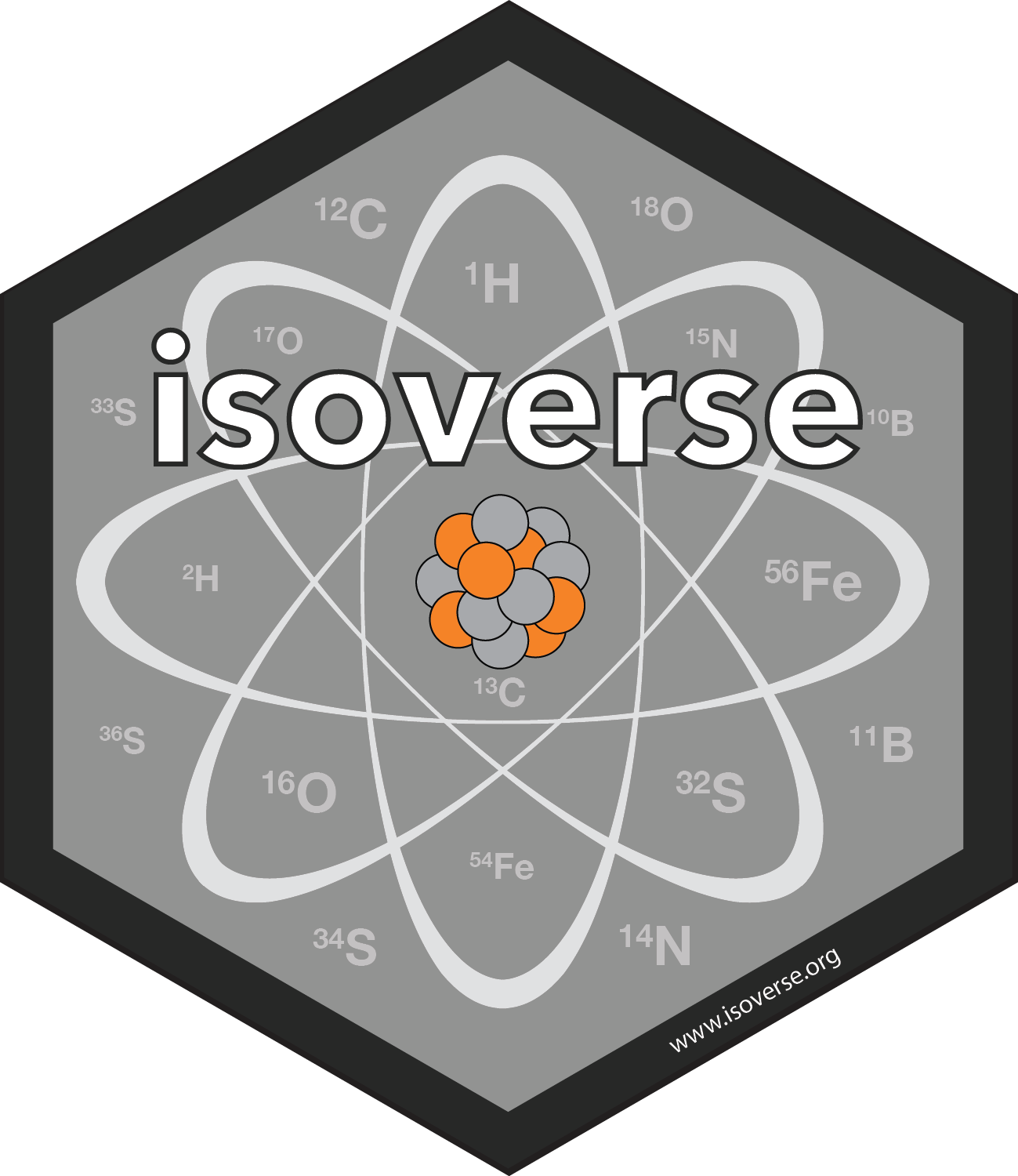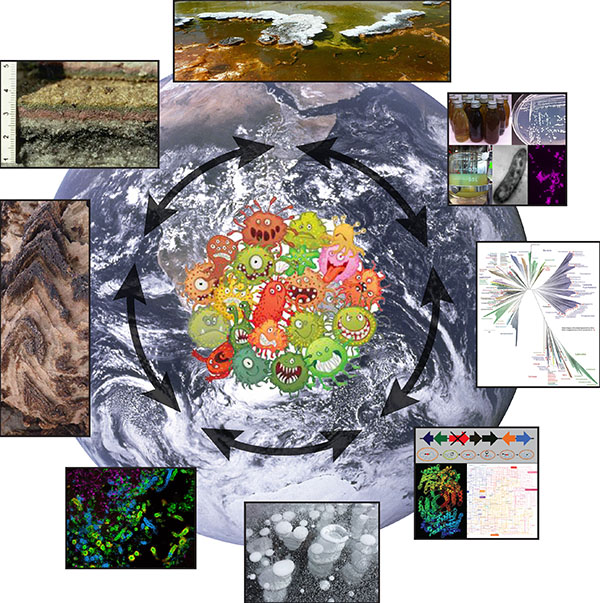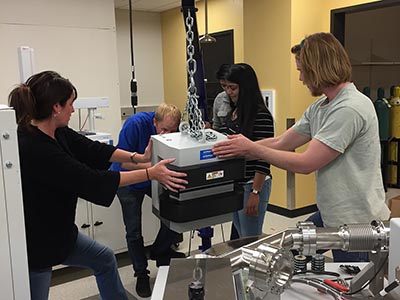Welcome Harp and Caj
Welcome to our new graduate student Harp Batther who is going to work on methanogens jointly with the Templeton lab, and research affiliate Caj Neubauer who will expand his work on soft-ionization stable isotope geochemistry in collaboration with our Organic and Isotope Geochemistry Lab. It’s wonderful to have you both on the team and looking forward to the science ahead.
NSF CAREER proposal on soil lipid biomarkers funded
The NSF CAREER proposal on branched GDGT biomarkers has been funded! Branched GDGTs are an intriguing class of lipid biomarkers that are frequently used in paleoclimate studies yet we still know strikingly little about their origins and biological function. In addition to the laboratory research on branched GDGTs, this project will create a new Course-based Undergraduate Research Experience (CURE) class on Experimental Geomicrobial Diversity (coming Fall 2021) to involve undergraduate students in our research on branched GDGTs together with close collaborator Lynne Albert at Red Rocks Community College.
Rocky Mountain Geobiology Symposium
Just announced: the 4th annual Rocky Mountain Geobiology Symposium will be taking place on April 11 2020 at the Colorado School of Mines in Golden, Colorado. Mark your calendars for this great opportunity to meet all kinds of bio & geo enthusiasts and hear about the research done across the Rocky Mountain states. Abstract submission deadline is February 29.
Welcome Joely, Elder, Toby, Jamie and Emma
Welcome to our new undergraduate research assistants Joely Depoy and Alec Elder who joined us in the spring and summer respectively and are back in the lab working on culturing exciting new soil microbes, new graduate student Toby Halamka who is tackling soil lipid biomarkers, postdoc Jamie McFarlin working closely with collaborators in CU’s Institute for Arctic and Alpine Research (INSTAAR) on arctic paleoclimate, and postdoc Emma Bertran working on a joint project on nitrogen biochemistry with the Zhang lab at the Princeton Environmental Institute. Excited to have you all and looking forward to the fun science ahead.
Collaborative proposal on archaeal lipid biomarkers funded
Our collaborative proposal with the Leavitt lab at Dartmouth into the isotopic signatures of archaeal lipid biomarkers got funded by NSF. This will be a fantastic collaboration that has been several years in the planning and we look very much forward to working closely with the team at Dartmouth.
Postdoc position on Nitrogenase biogeochmistry (filled)
We have an opening for a postdoc at the Princeton Environmental Institute as part of a NASA funded project to the Zhang and Kopf labs to study microbial biogeochemistry of the nitrogen cycle. Update: this position has now been filled. Thank you to all applicants for your interest.
3rd Rocky Mountain Geobiology Symposium
The annual Rocky Mountain Geobiology Symposium took place at CU Boulder this year for the first time. A huge thanks to the grad student organizing team and everyone for joining us and making it such a fantastic day of fun science

Kick-off for the Center for Microbial Exploration (CME) at CU Boulder
Fantastic kick-off event for CU’s new Center for Microbial Exploration connecting faculty and students interested in microbial research across the campus. Check out upcoming events on the CME website.
Shaelyn's first paper out in print!
Silverman SN, Kopf SH, Bebout BM, Gordon R, Som SM. Morphological and isotopic changes of heterocystous cyanobacteria in response to N2 partial pressure. Geobiology. 2019;17:60–75. Congratulations to Shae, first student-lead paper from the lab! All data and analysis available on GitHub. Explore them interactively on Binder .
Launch of the isoverse

New labware: balch tube tower

Two new papers on lipid-SIP
Two new papers out in the Journal of Bacteriology and Rapid Communications in Mass Spectrometry, respectively, by Caltech collaborator Caj Neubauer on refinements of heavy water lipid-SIP and its application in cystic fibrosis research: Refining the Application of Microbial Lipids as Tracers of Staphylococcus aureus Growth Rates in Cystic Fibrosis Sputum and Towards measuring growth rates of pathogens during infections by D2O-labeling lipidomics. Congrats Caj! See publications for full references and this link for a great commentary on this work by Tara Gallagher, Joann Phan and Katrine Whiteson.
Princeton-Boulder Exchange: Ciara visiting the Sigman Lab
Grad. student Ciara Asamoto continues the Princeton-Boulder exchange with a visit to the Sigman Lab.

New paper on nitrogen isotopes under iron limitation
New paper out in Geochimica et Cosmochimica Acta by Princeton collaborator Darcy McRose on the Effect of iron limitation on the isotopic composition of cellular and released fixed nitrogen in Azotobacter vinelandii. Congrats Darcy! See publications for full reference.
New paper on carbon isotopes in methanogenesis
New paper out in Geochimica et Cosmochimica Acta by Templeton Lab student Hannah Miller on Large carbon isotope variability during methanogenesis under alkaline conditions. Congrats Hannah! See publications for full reference.
New general interest science class: Our Microbial Planet

Princeton-Boulder Exchange: Zhang lab members visit CU Boulder
Zhang Lab members Eunah Han and Dr. Ashley Maloney visit the Geomicrobial Physiology Lab for the summer. Welcome Eunah and Ashley!

Geobio summer celebration
The Geobio crew celebrates at the Rayback Collective and says good-bye and thank you to Nabil and our visitor from Israel Ari Meilijson

New labware: headplate holder

2nd Rocky Mountain Geobiology Symposium
The second Rocky Mountain Geobiology Symposium (RMGS) once again took place at the Colorado School of Mines in Golden, CO. Enormous thanks to John Spear, Emily Kraus, Blake Stamps and everyone at Mines for organizing the second symposium and a fantastic day of science with participants from all over the Rocky Mountain states.

New paper on virus-host interactions
New paper out in Environmental Microbiology from work spear-headed by collaborator Ally Pasulka, Interrogating marine virus‐host interactions and elemental transfer with BONCAT and nanoSIMS‐based methods. Congrats Ally! See publications for full reference. Supplementary materials available on GitHub.
News Article: The hard science of soft substances
The Organic Geochemistry Lab in the INSTAAR news, check it out!
New upper level class: Introduction to Geomicrobiology

Goldschmidt 2017
Sebastian is giving a talk in session 11d: Nitrogen isotopes in biogeochemical cycles and food webs and co-organizing session 15f: Novel tools and approach for investigating biogeochemical cycling and organic signatures of microbial activity at the 2017 Goldschmidt conference in Paris. Come join us for these exciting sessions!
New R package on CRAN: lans2r
AbSciCon 2017
Shaelyn Silverman is presenting her first talk at an international scientific conference at the Astrobiology Science Conference in Mesa, AZ on her senior thesis. Congrats Shae! S. N. Silverman, S. Kopf, R. Gordon, B. Bebout, S. Som. Measuring Ancient N2 Pressure Using Fossilized Cyanobacteria. Abstract #3242.
1st Rocky Mountain Geobiology Symposium
The first Rocky Mountain Geobiology Symposium (RMGS) took place at the Colorado School of Mines in Golden, CO with participants from all over the Rocky Mountain states and beyond enjoying a fantastic day of science, new connections, sunny Colorado spring weather and a memorable end-of-day at Golden’s New Terrain Brewing. Big thanks to John Spear, Emily Kraus, Blake Stamps and everyone at Mines for all the hard work fundraising and organizing an amazing day to kick off the RMGS tradition.

Shaelyn's thesis defense
Shaelyn Silverman successfully defended her senior thesis on the Morphological and Isotopic Changes of Anabaena cylindrica PCC 7122 in Response to N2 Partial Pressure. After a year of hard work first with Sanjoy Som at NASA Ames over the summer after her junior year, followed by research in the Geomicrobial Physiology Lab at CU Boulder during her senior year, Shae presented a fantastic written thesis and presentation and received the much deserved highest honors recommendation. Congratulations to Shaelyn for an outstanding senior thesis!
First lab visitor: Matt Salie
The lab welcomes its first visitor. Matt Salie from the Williamson Lab at the Scripps Research Institute is visiting us this week to gain experience with continuous culturing techniques and gather preliminary data for his postdoctoral work on proteome dynamics. Welcome Matt!
Geomicrobial Physiology Lab ready
Our culturing lab finished construction!
After several months of renovations, the construction on the Geomicrobial Physiology culturing lab in the Benson Earth Sciences building wrapped up earlier this week and we officially moved in today. Several pieces of equipment are already set up and ready to go and the first set of experiments is under way - it’s going to be an exciting Spring!
Getting ready to rock


The evolution of the new lab
Hiring a research assistant
The Isotope Geomicrobiology Group is seeking a highly qualified research technician and laboratory manager starting in February 2017. The Isotope Geomicrobiology Group comprises the Kopf and Wing labs located in the Benson Earth Sciences building and is focused on studying the physiology and geologic signatures (isotope effects and lipid biomarkers) of diverse geochemically relevant microorganisms (phototrophic, heterotrophic and chemolithotrophic aerobes and anaerobes across all domains of life). We regularly combine aspects of aerobic and anaerobic laboratory culture, continuous culture, molecular biology, fluorescence microscopy, aqueous chemistry, isotopic analysis, and experimental design (3D-printing, microcontroller & circuit setup), and are looking for a highly motivated individual with excellent technical, communicational and organizational skills who is looking to apply and expand their existing skillset in a friendly and highly collaborate research environment. For additional details and the CU Boulder application portal, please consult the official job posting.
Shaelyn and Allison presenting at AGU
Shaelyn Silverman is presenting a poster on Measuring Ancient Air Pressure Using Fossilized Cyanobacteria (Abstract ID 121646) on work that is part of her Senior Thesis at CU Boulder together with Sanjoy Som (NASA Ames). Allison Lee is presenting a poster on how Iron availability influences 15N-isotope fractionation during nitrogen fixation by aerobic chemoheterotroph Azotobacter vinelandii (Abstract ID 184186) on work that is part of her undergraduate research in Xinning Zhang’s new lab at Princeton University. First time at AGU, congratulations to both and have a great time at the conference!
GC-IMRS installation
The installation of our GC-IRMS is under way!
Our new gas-chromatograph (GC) isotope ratio mass spectrometer (IRMS) is getting installed and we are looking forward to getting everything up an running. This is one of the instruments housed in the Organic Geochemistry Laboratory (OGL) in the new Sustainability, Energy and Environment Complex (SEEC). The OGL is a shared space with Julio Sepúlveda and Gifford Miller that provides a fantastic environment for all types of organic geochemistry research. The new GC-IRMS will complement the existing instrumentation and analytical tools acquired by Julio (an LC-Orbitrap and GC-triple quadrupole) and will allow us to determine the isotopic composition of specific organic compounds buy coupling the separating power of a gas chromatograph via a combustion/pyrolysis interface to the precision of an isotope ratio mass spectrometer.
New graduate class on Stable Isotope Fractionation

Lab renovations have begun
Our culturing lab is under construction!
The Geomicrobial Physiology culturing lab in the Benson Earth Sciences building is officially under construction with renovations scheduled to finish at the end of the year. We look forward to moving in and getting everything up and running early in the new year.


















